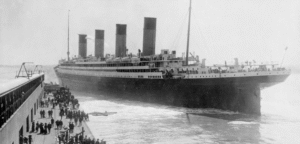The S-400 Triumf (Russian: C-400 Триумф, NATO reporting name: SA-21 Growler) is an advanced, mobile, long-range surface-to-air missile (SAM) system developed by Russia’s Almaz-Antey Central Design Bureau. Entering service in 2007, it is designed to counter a wide range of aerial threats, including aircraft, unmanned aerial vehicles (UAVs), cruise missiles, and ballistic missiles. As a successor to the S-200 and S-300 systems, the S-400 offers superior range, multi-target engagement, and anti-stealth capabilities, making it one of the most sophisticated air defense systems globally.
1. Development History
- Origins: The S-400 program began in the 1980s as an evolution of the S-300 family, aiming to address advanced threats like cruise missiles, stealth aircraft, and tactical ballistic missiles. Codenamed “Triumf,” it was initially intended to replace the S-200 and enhance the S-300’s capabilities.
- Challenges: Development faced significant hurdles, including high costs, technical complexities in countering low-altitude cruise missiles, and disruptions following the Soviet Union’s collapse in 1991. By 2003, concerns emerged that testing relied on older S-300P interceptors, delaying full readiness.
- Key Milestones:
- 1999: First successful tests conducted at Kapustin Yar missile range.
- April 2004: Successful interception of a ballistic missile using the 48N6DM missile.
- February 2004: Project completion announced.
- April 28, 2007: System approved for service.
- August 6, 2007: First battalion assumed combat duty near Moscow.
- October 2018: The long-range 40N6 missile was accepted, completing the system’s full capability.
- Design Team: Led by Almaz-Antey, with contributions from Fakel Machine-Building Design Bureau (missiles), Novosibirsk Research Institute of Measuring Instruments (radars), and others. Dr. Alexander Lemanskiy served as chief engineer.
- Purpose: The S-400 was designed to protect strategic assets, deny enemy airspace, and counter NATO’s air superiority, particularly against 4th- and 5th-generation aircraft and precision-guided munitions.
2. Technical Specifications
The S-400 is a highly mobile, integrated system combining radars, command-and-control units, and multiple missile types for layered defense. Its key specifications include:
- Engagement Range:
- Maximum: 400 km (40N6E missile).
- Medium-range: 250 km (48N6E3/DM), 120 km (9M96E2), 40 km (9M96E).
- Radar Detection Range: Up to 600 km (91N6E Big Bird radar).
- Altitude: 10 meters to 30 km, with ballistic missile intercepts in near-space.
- Missile Speed: Up to Mach 14 (17,000 km/h).
- Target Engagement:
- Tracks up to 300 targets simultaneously.
- Engages up to 36 targets concurrently (or 72 with dual-missile salvos per target).
- Deployment Time: Combat-ready in ~5 minutes.
- Mobility: Mounted on MZKT-7930 (8×8) and BAZ-64022 (6×6) vehicles, capable of 60 km/h on roads and 25 km/h off-road.
- Crew: Typically 3–4 personnel per launcher, with additional radar and command post operators.
- Weight: A single battalion (8 launchers, radars, command posts) weighs approximately 100–150 tons, depending on configuration.
3. System Components
The S-400 operates as a networked system, coordinated by the 30K6E administration system, which can manage up to eight battalions (divizions). Its components include radars, command-and-control units, launchers, and missiles, with optional elements for enhanced performance.
a. Radars
- 91N6E Big Bird: A 3D panoramic acquisition and battle management radar with a 600 km range and 360-degree coverage. It detects aircraft, missiles, and UAVs, with jamming resistance via frequency hopping. Mounted on an 8×8 trailer.
- 92N6E Grave Stone: A multifunctional tracking and engagement radar with a 340 km range, capable of guiding missiles to 20 targets simultaneously. Mounted on an MZKT-7930 vehicle.
- 96L6E Cheese Board: A 3D surveillance radar with a 300 km range, used for autonomous battery operations or low-altitude detection. Optionally co-mounted with the 92N6E.
- Protivnik-GE: A UHF anti-stealth radar with a 400 km range, effective against low-radar-cross-section (RCS) targets like the F-35.
- Nebo-M: A VHF radar with a 400 km range, detecting targets at low altitudes (down to 500 meters) and countering stealth technology.
- Gamma-C1E: A mobile SHF radar with a 300 km range for high-precision tracking.
- Moscow-1: A passive electronic intelligence sensor with a 400 km range, 2.5 times more effective than Protivnik-GE for detecting emissions.
- Orion and Avtobaza-M: High-precision target designation systems for enhanced situational awareness.
b. Command and Control
- 55K6E: The primary command post, based on the Ural-532301 vehicle, processes radar data, assigns targets, and coordinates launches.
- 30K6E: A higher-level administration system that integrates multiple S-400 battalions and interfaces with other defenses (S-300, Tor-M1, Pantsir-S1) via systems like Polyana-D4M1 or Baikal-1ME.
- Data Links: Supports integration with AWACS (e.g., A-50U), satellites, and ground-based sensors for over-the-horizon targeting.
c. Launchers
- 5P85TE2: A transporter-erector-launcher (TEL) on a BAZ-64022 6×6 tractor truck, carrying four launch tubes.
- 5P85SE2: A trailer-based launcher, also with four tubes, towed by a 5T58-2 vehicle.
- Configuration: A typical battalion includes 8–12 launchers, carrying 32–48 missiles, with reload vehicles for rapid rearming.
d. Missiles
The S-400 employs four missile types, each optimized for specific threats, stored in sealed launch tubes for reliability:
- 40N6E: Ultra-long-range missile with a 400 km range and 30–35 km altitude. Uses active radar homing and a 180 kg warhead to engage AWACS, J-STARS, or ballistic missiles. Accepted in 2018.
- 48N6E3/48N6DM: Medium-to-long-range missile with a 250 km range and 143 kg high-explosive fragmentation warhead. Effective against aircraft, cruise missiles, and tactical ballistic missiles.
- 9M96E: Short-range missile with a 40 km range, designed for precision strikes on fast-moving targets like fighter jets, using a 24 kg warhead.
- 9M96E2: Medium-range variant with a 120 km range, optimized for direct impact with high maneuverability (60g acceleration).
- 77N6 (in development): A hit-to-kill missile for ballistic missile defense, similar to the U.S. Patriot PAC-3, with no warhead, relying on kinetic energy.
e. Optional Elements
- 15I6ME: Radar mast extending coverage by 30, 60, or 90 km for low-altitude detection.
- A-50/A-50U: Airborne early warning and control (AEW&C) aircraft for target designation.
- 1RL220BE: Jamming systems for electronic warfare.
- Integration: Compatible with legacy systems (S-200D, S-300) and short-range defenses (Pantsir-S1, Tor-M1) for a multi-layered network.
- Resurs Satellites: Provide targeting data for over-the-horizon engagements.
4. Operational Capabilities
The S-400 is engineered for flexibility and resilience in contested environments, with the following capabilities:
- Multi-Target Engagement: Tracks 300 targets and engages 36–72 simultaneously, using dual-missile salvos for high-value or evasive targets.
- Threat Versatility: Counters fighter jets, stealth aircraft, drones, cruise missiles, tactical ballistic missiles, and high-value assets like AWACS, J-STARS, and tankers.
- Anti-Stealth: UHF (Protivnik-GE) and VHF (Nebo-M) radars detect low-RCS targets, as stealth is less effective in these bands. However, detection range and accuracy vary based on target RCS and radar integration.
- Electronic Warfare Resistance: Equipped with electronic counter-countermeasures (ECCM), including frequency hopping and signal processing, to operate in jammed environments.
- Layered Defense: Multiple missile types enable engagement at short (40 km), medium (120–250 km), and long ranges (400 km), creating a comprehensive defense bubble.
- Network Integration: Interfaces with other SAM systems, AWACS, and command posts for coordinated operations. For example, Pantsir-S1 provides close-in defense against low-altitude threats.
- Rapid Deployment: Fully mobile, with a 5-minute setup time, allowing quick repositioning to avoid counterstrikes.
- Autonomous Operation: Individual batteries can operate independently using the 96L6E radar, enhancing survivability if command links are disrupted.
5. Operational Deployment
The S-400 is deployed by Russia and exported to several nations, with significant operational history and strategic implications.
a. Russia
- Initial Deployment: Entered service in 2007 with the First Air Defense Corps near Moscow.
- Current Status: Russia operates ~16–18 battalions (56 systems), though losses in Ukraine (12+ systems destroyed by May 2024) have reduced numbers. Each battalion typically includes 8 launchers, 32–48 missiles, and supporting radars.
- Key Locations:
- Moscow: Multiple regiments protect the capital, forming a dense air defense network.
- Kaliningrad: Defends Russia’s Baltic exclave, countering NATO air forces.
- Crimea: Deployed post-2014 annexation to control Black Sea airspace.
- Syria: Stationed at Khmeimim Air Base since 2015 to deter NATO and Israeli airstrikes, though not fired in combat.
- Eastern Military District: Covers Siberia and the Far East, targeting Chinese and U.S. threats.
- Arctic: Deployed to protect strategic northern routes.
- Combat Experience: In Syria, the S-400 has served as a deterrent, tracking U.S., Israeli, and Turkish aircraft without engaging. In Ukraine, it has faced challenges, with Ukrainian forces using Western-supplied ATACMS, Storm Shadow, and modified Neptune missiles to destroy systems. Losses highlight vulnerabilities to low-altitude and saturation attacks.
b. Export Operators
- India:
- Deal: Signed a $5.43 billion contract in October 2018 for five squadrons (10 batteries).
- Delivery: Three squadrons operational by May 2025, deployed in Punjab (Pathankot), Rajasthan, and Gujarat to counter Pakistan and China. Two squadrons delayed to 2026 due to Russia-Ukraine disruptions.
- Name: Known as “Sudarshan Chakra,” symbolizing Lord Vishnu’s weapon.
- Combat Use: On May 7–8, 2025, India used the S-400 to neutralize Pakistani drones and missiles targeting 15 cities (Srinagar, Jammu, Amritsar, etc.) during tensions post-Operation Sindoor. Exercises in July 2024 showed an 80% success rate against simulated targets.
- Strategic Role: Counters Pakistan’s Shaheen-3 ballistic missiles and China’s J-20 stealth fighters, enhancing India’s air defense along its western and northern borders.
- China:
- Deal: Signed in 2014 for six battalions ($3 billion), delivered by 2018.
- Deployment: Strengthens air defense in the South China Sea and against Japan, Taiwan, and U.S. forces.
- Significance: Enhances China’s A2/AD strategy, though integration with Russian systems poses logistical challenges.
- Turkey:
- Deal: Signed in 2017 for four batteries ($2.5 billion), delivered starting July 2019.
- Controversy: Sparked tensions with NATO, as the S-400’s radars could collect data on U.S.-made aircraft (e.g., F-35), leading to Turkey’s exclusion from the F-35 program.
- Deployment: Stationed near Ankara and tested in 2020, but not fully integrated with NATO systems.
- Algeria: Reportedly acquired S-400 systems by 2021, though details are scarce. Likely deployed to counter regional threats from Morocco and Western forces.
- Iran: Reports in 2024 suggested delivery of S-400 systems to deter Israeli airstrikes, especially amid escalating tensions post-October 2023.
- Prospective Buyers: Qatar (in talks since 2018), Saudi Arabia, and Egypt have expressed interest, though U.S. sanctions risks have slowed progress.
c. Combat Performance
- Successes:
- India (2025): Effectively neutralized Pakistani aerial threats, demonstrating reliability against drones and missiles.
- Syria (2015–present): Deterred NATO and Israeli airstrikes, maintaining Russian air control without direct engagements.
- Challenges:
- Ukraine (2022–present): The S-400 has underperformed against low-altitude cruise missiles (e.g., Storm Shadow) and ballistic missiles (e.g., ATACMS). Ukrainian drone and missile strikes have destroyed multiple systems, exposing vulnerabilities to saturation attacks and terrain limitations.
- Criticism: Analysts argue the S-400 is overhyped against maneuverable or low-flying targets, though it excels against non-maneuverable aerodynamic targets (e.g., 4th-generation jets).
6. Strategic Significance
The S-400 is a game-changer in air defense, with profound implications for military strategy and geopolitics:
- Airspace Denial: Its 400 km range creates a robust A2/AD bubble, forcing adversaries to operate at safer distances. For example, India’s deployment in Punjab covers key Pakistani airfields, while Russia’s Kaliningrad systems threaten NATO operations in the Baltic.
- Anti-Stealth: UHF and VHF radars challenge stealth aircraft (e.g., F-22, F-35), though effectiveness depends on integration with AWACS and precise targeting. Detection does not always guarantee engagement due to missile guidance limitations.
- Geopolitical Impact:
- India: The S-400 enhances deterrence against Pakistan and China but faced U.S. objections under CAATSA, risking sanctions. India prioritized it over the Patriot PAC-3 for cost ($5.43 billion vs. $10 billion) and versatility.
- Turkey: Its purchase highlighted NATO’s vulnerabilities, as the S-400 cannot integrate with Western systems, raising security concerns.
- China and Iran: Strengthens their A2/AD capabilities, complicating U.S. and allied operations in the South China Sea and Middle East.
- Export Leverage: Russia uses S-400 exports to counter U.S. influence, offering strategic partnerships to nations like India and Turkey.
- Limitations:
- Vulnerable to low-altitude cruise missiles without over-the-horizon sensors (e.g., AWACS, aerostats).
- Requires a networked system (radars, short-range SAMs, AWACS) to maximize effectiveness, increasing costs and complexity.
- Susceptible to saturation attacks by drones or missile salvos, as seen in Ukraine.
- High maintenance and training demands limit its effectiveness in less experienced militaries.
7. Comparison with Other Systems
- U.S. Patriot PAC-3:
- Range: 180 km (PAC-3 MSE) vs. S-400’s 400 km.
- Strengths: Patriot excels in terminal ballistic missile defense with hit-to-kill technology; S-400 is more versatile against diverse targets.
- Weaknesses: Patriot’s shorter range and higher cost ($4 billion per battery) vs. S-400 ($200 million per battalion).
- U.S. THAAD:
- Role: Specialized for high-altitude ballistic missile defense (200 km range, 150 km altitude).
- Comparison: S-400 is multi-role, engaging aircraft and missiles at lower altitudes, but lacks THAAD’s exo-atmospheric capability.
- Chinese HQ-9 (Pakistan):
- Range: 120–300 km vs. S-400’s 400 km.
- Weaknesses: Inferior radars and fewer missile types, giving India’s S-400 an edge in South Asia.
- Israeli Iron Dome:
- Role: Short-range rocket and artillery defense (4–70 km).
- Comparison: S-400 is designed for long-range, high-altitude threats, while Iron Dome is tactical and localized.
- Russian S-500:
- Status: Under development, complementing S-400 with hypersonic and space-based threat defense (600 km range).
- Role: S-500 focuses on strategic missile defense, while S-400 remains multi-role.
8. Cost and Procurement
- Cost: A single battalion (8 launchers, radars, command posts) costs ~$200 million. Export deals vary:
- India: $5.43 billion for five squadrons.
- China: $3 billion for six battalions.
- Turkey: $2.5 billion for four batteries.
- Lifecycle Costs: Maintenance, training, and integration with AWACS or short-range SAMs (e.g., Pantsir-S1) add significant expenses. Spare parts and missile reloads cost millions annually.
- Procurement Challenges:
- India: Delivery delays due to Russia-Ukraine conflict; U.S. sanctions risks under CAATSA.
- Turkey: NATO sanctions and F-35 program exclusion.
- Russia: Production strained by Ukraine losses and Western sanctions on components.
9. Controversies and Criticisms
- Overhyped Capabilities: Some analysts argue the S-400 struggles against low-altitude, maneuverable targets or hypersonic missiles, as seen in Ukraine. Its effectiveness depends heavily on operator training and system integration.
- Pakistan’s Claim: On May 10, 2025, Pakistan claimed its JF-17 jets destroyed an Indian S-400 in Adampur, Punjab, using hypersonic missiles. Indian military sources refuted this, calling it propaganda, with no evidence of damage.
- Geopolitical Tensions:
- India: U.S. concerns over S-400 data collection on American platforms (F-16, Apache) led to CAATSA waiver debates.
- Turkey: NATO’s distrust prompted sanctions and strained alliances.
- Operational Risks: Complex systems like the S-400 risk errors, as seen in Iran’s accidental downing of a Ukrainian airliner in 2020 (using a different SAM system), highlighting training challenges.
- Ukraine Losses: The destruction of 12+ systems by Ukrainian forces has damaged the S-400’s reputation, though losses reflect operational errors and lack of short-range defenses rather than system flaws.
10. Future Prospects
- S-500 Integration: The S-500 Prometheus, entering service in 2021, will complement the S-400, focusing on hypersonic missiles, satellites, and exo-atmospheric threats. The S-400 will remain the multi-role backbone.
- India’s Project Kusha: India is developing an indigenous long-range SAM (150–350 km) to rival the S-400, expected by the 2030s, reducing reliance on Russian systems.
- Upgrades: The 77N6 missile will add hit-to-kill capability, enhancing ballistic missile defense. Improved radars and AI-based target allocation are under consideration.
- Export Potential: Despite U.S. sanctions, demand remains strong in the Middle East (Qatar, Saudi Arabia) and Southeast Asia, driven by the S-400’s cost-effectiveness and anti-stealth features.
- Challenges: Russia’s production capacity is strained by Ukraine losses and sanctions, potentially limiting exports. Emerging threats like hypersonic weapons and drone swarms require further evolution.
11. Conclusion
The S-400 Triumf is a technological marvel, combining long-range firepower, advanced radars, and multi-target engagement to create a formidable air defense system. Its 400 km range, anti-stealth capabilities, and versatility make it a strategic asset for Russia, India, China, and others, reshaping regional power dynamics. India’s successful combat use in 2025 against Pakistani threats underscores its effectiveness, while Russia’s deployments in Syria and Crimea highlight its deterrence value.
However, the S-400 is not without flaws. Vulnerabilities to low-altitude attacks, saturation strikes, and dependence on networked systems limit its invincibility, as seen in Ukraine. Geopolitical controversies, including U.S. sanctions and NATO tensions, complicate its global adoption. As air defense evolves, the S-400 remains a benchmark, but its operators must adapt to emerging threats like hypersonic missiles and autonomous drones.
For nations wielding the S-400, it is a symbol of sovereignty and a shield against aerial threats, but its true power lies in integration, training, and strategic deployment. As the world enters an era of hypersonic and space-based warfare, the S-400’s legacy will depend on its ability to evolve alongside systems like the S-500 and indigenous alternatives like India’s Project Kusha.















Leave a Reply